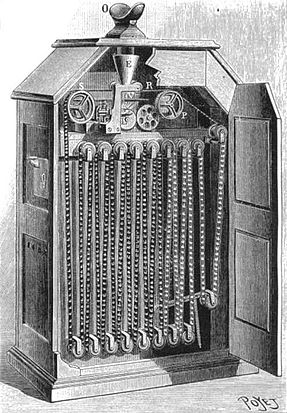In early 1889, he finally gave a name to his planned invention in a second claim: kinetoscope, from the Greek
words quint means “movement” and scoops means “to view”
William Dickson, Edison's assistant and one of his most talented men. His task was to develop the kinatiscope. Because of this, many scholars and historians largely credited Dickson despite Edison taking the full credit. Edison started using them for testing during the kinetoscope’s development. Eastman Company eventually started producing its own celluloid films, which Dickson soon began purchasing by bulk. Working under this new direction, Dickson, along with a new assistant, started creating a device with a horizontal-feed system for exposing film strips.
The kinetoscope was born. The prototype, which was also a camera aside from a peep-hole viewer, was unveiled on May 20, 1891. It used 18mm wide films, which, according to author David Robinson
The final product was completed in 1892, sporting a minor change: the horizontal-feed mechanism was replaced with a vertical one. It was formally introduced to the public on May 9, 1893 at the Brooklyn Institute of Arts and Sciences. To watch a clip of moving images, the viewer would peek into a peep-hole with magnifying lenses on top of the cabinet.
